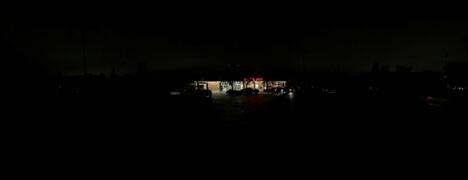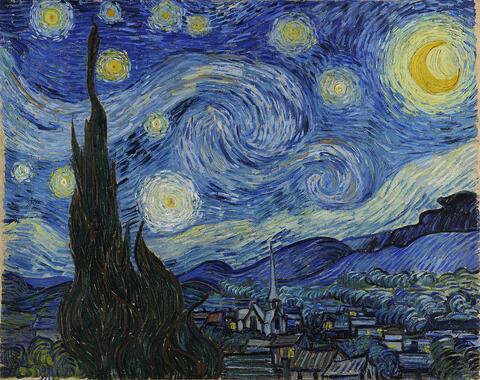
Principal's Pen: March 2023
Another "atmospheric river" hit the East Bay in the middle of March. And this time, the storm came with destructive winds that blew over hundreds of trees, causing more than 250,000 residents to lose electricity when they fell. Many schools and local businesses were forced to close their doors for up to 48 hours until the debris was cleared and power restored. But there was one store in the city of Concord that conspicuously had its lights on and was open that first night as the rest of the town was dark, cold, and wet, Trader Joe's. The grocery store was prepared; they had a generator.

Light emanating from just one building amid an eerily dark and storm-battered city is undoubtedly mesmerizing, if not metaphoric. And since that particular building in Concord houses Trader Joe's, a grocery store chain universally regarded as having exceptionally friendly, inquisitive, and happy employees, the metaphor, i.e., "light in the darkness," is appropriate.
Trader Joe's describes its friendly staff, or as they call them "crew members," on their website when they speak of their nationwide "store environment that imparts adventure, humor, and a warm sense of community." Few who have shopped at any Trader Joe's in the United States would deny the truth of that statement. Indeed, the company has found a way to achieve its goal of having its customers' shopping experience be one that is "rewarding, eventful, and fun." Seeing their lights on in the darkness was just a snapshot of what is true during a sunny day; the people who work there are different.
In relation to the picture of Trader Joe's in the darkness is Vincent van Gogh's iconic oil painting, The Starry Night, produced in 1889. Many believe the painting was inspired by one of the Post Impressionist's favorite poems, "Under the Stars," by Diana Craik (1877). In a historical analysis of his personal letters, van Gogh frequently quoted Craik's poem. Still, he often concentrated on one verse that likely motivated his painting of the masterpiece: "When earth sounds cease, God's voice is heard." Indeed, the brushstrokes of swirling gold and white stars and buttery yellow fireballs hovering over the tiny town, each a supernova of indescribable energy and heat, are meant to tell of the One who spoke them into existence. If there were ever a work of art that rightly captured the essence of Psalm 19:1 on canvas, it would be van Gogh's: "The heavens declare the glory of God, and the sky above proclaims his handiwork."

But there's more to van Gogh's masterpiece than the majestic display in the sky. For the town underneath the Creator's vibrant cosmos likewise has hints of the same shades of yellow, white, and gold that make up the stars and moon bearing witness to their Maker. In fact, every home and building in the city has a speck of light emanating from its windows and doors except the one that stands prominently at the center of the canvas commanding the viewer's attention, the church. Certainly, van Gogh was not attempting to paint the church as "the light of the world" or a "city on a hill that cannot be hidden" as described by Jesus in the Sermon on the Mount. By the looks of the dark church, van Gogh was doing the opposite. The church he painted was lifeless and cold, failing to live up to the center stage role God gave it.
But the viewer of van Gogh's work must further inquire about the nature of the light emanating from the homes and buildings surrounding the church in the town. Is it the light of "general revelation" as described in Psalm 19, i.e., light coming from created beings, who, by their very existence, testify to the glory and goodness of God? If so, the people working and living in those buildings and homes are synonymous with the stars in van Gogh's vibrant night sky. Surely, creatures bearing the "image of God" declare His glory and proclaim His handiwork without saying a word. But Van Gogh's church is likewise filled with image bearers, and light does not shine from there.
It is more likely that the light in the town was meant to contrast the kindness and approachability of people in the illuminated dwellings with those who guarded organized religion in the town. It must be noted that van Gogh was denied entrance into a divinity and missionary school before painting The Starry Night, so he likely held some bitterness toward the religious institutions and those in the church who rejected him. Later in his life, he stated, "When I feel a terrible need of - shall I say the word - religion, then I go out at night and paint the stars."
But it is undoubtedly evident in The Starry Night and many of his later works that the artist did not reject God or deny particular truths in the Bible. In fact, van Gogh's The Raising of Lazarus, The Sower, and The Good Samaritan are some of the most cherished works of Christian-themed art in existence. And while able to produce timeless masterpieces of biblical events, van Gogh nevertheless lived as a theologically incomplete man, wounded and estranged by the church. He looked for the Creator in His creation and in the acceptance of those in town who welcomed him. Had he lived in the modern world, he may have recognized the people and places that stand out as lights in the darkness, like those at Trader Joe's. And he probably would have painted them into his scene.
But general revelation or the kindness of God's image bearers could only provide van Gogh, and can only provide us, with the realization that God exists. What van Gogh needed, and what we need in addition to a Creator, is a Redeemer. And the God of the Scriptures has revealed He is indeed a Redeemer. Through “special revelation,” the living and written Word, God has revealed who He is, what He has done, and how His creatures can receive forgiveness by banking on the life, death, and resurrection of his son, Jesus. And through trust in Jesus Christ, we too can know the Creator "who brings out the starry host one by one and calls forth each of them by name" (Isaiah 40:26).
Christians, i.e., the church, can also learn from van Gogh's struggle to connect with the people of God. Redeemed people are called to stand out amidst the darkness of the world, yes, through kindness and approachability, but principally through the joy of being related to the Savior who makes us clean and welcomes us into his family. And being part of His family is something that over the course of a lifetime, shapes us to be more like Him. But “on the job” training is part of being a member of God’s family, the church. One reason Trader Joe's employees are so friendly is that they are trained and regularly encouraged to be amicable, hospitable, and curious about others. Every local church would do well to add such training to the discipleship process for new believers.
May the Lord help us to make Him look good to the watching world.
Blessings,
Nicholas Harris
“Do everything without grumbling or arguing, so that you may become blameless and pure, “children of God without fault in a warped and crooked generation.” Then you will shine among them like stars in the sky” (Philippians 2:14–15, NIV)
Image credit: Vincent van Gogh, The Starry Night (1889), The Museum of Modern Art (WikiCommons)
Stay close to your community! Get featured stories sent to your inbox.
Subscribe to the Berean Bulletin
.png?mask=1)
